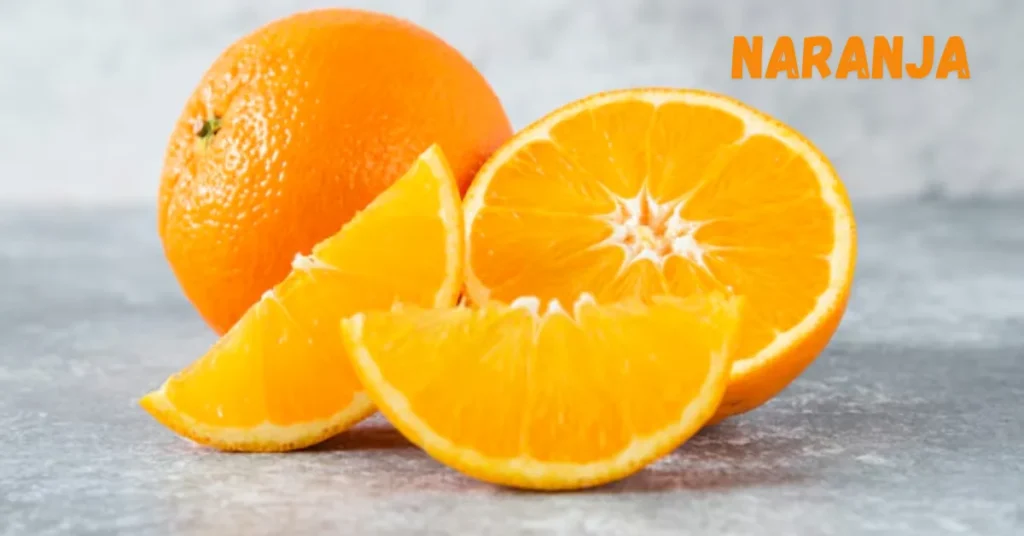Introduction
Have you ever found yourself in a conversation about colors and fruits, only to stumble upon the terms “naranja” and “anaranjado”? While they may seem similar at first glance, these two Spanish words have distinct meanings that can confuse even native speakers. Whether you’re brushing up on your language skills or simply curious about their differences, understanding the nuances behind naranja and anaranjado is essential. Let’s peel back the layers of meaning in this vibrant linguistic exploration!
The Origin of the Spanish Words
The Spanish word “naranja” traces its roots back to the Arabic term “nāranj,” which referred to the orange fruit. This connection highlights how cultural influences have shaped language over centuries.
In contrast, “anaranjado” is derived from the same base but takes on a different form. It combines “naranja” with the suffix “-ado,” indicating color. Thus, while both words share a common origin, they serve distinct purposes in everyday conversation.
These etymological paths reflect Spain’s rich history of trade and interaction with various cultures. The journey of these terms showcases their evolution from foreign influences into integral parts of the Spanish vocabulary.
Understanding this origin not only enriches your grasp of the language but also connects you to its historical context and cultural significance.
Different Meanings and Uses of Naranja and Anaranjado
Naranja refers primarily to the fruit, the orange. It’s a staple in many diets and is celebrated for its juicy sweetness and vibrant flavor. When you hear someone say “naranja,” think of breakfast juices or zesty desserts.
Anaranjado, on the other hand, is an adjective used to describe color. It translates to “orange” in English when referring to anything that exhibits that hue—like a sunset or autumn leaves.
While both terms relate back to the same source, their applications differ significantly. You can enjoy naranjas as part of your diet while using anaranjado to paint vivid pictures with your words or art. This distinction enriches your vocabulary and ensures clarity in conversation.
Common Mistakes When Using These Words
Many people confuse naranja and anaranjado, leading to common mistakes in conversation.
One frequent error is using naranja when referring to the color instead of the fruit. Naranja specifically means “orange” as a noun, while anaranjado describes the color itself.
Another mistake happens with adjectives. Saying “la naranja es bonita” (the orange is pretty) is correct, but saying “el anaranjado es bonito” might sound awkward unless clearly referencing something colored orange.
Regional variations can also cause mix-ups. In some areas, people may use one term more than the other interchangeably without realizing it could lead to misunderstandings.
Mixing up singular and plural forms can trip language learners up too. For instance, remembering that “naranjas” refers to multiple fruits while “anaranjados” applies when describing several items of that color requires attention.
Clarifying these distinctions can enhance your Spanish fluency significantly!
Tips for Remembering the Difference
To remember the difference between “naranja” and “anaranjado,” try associating them with their meanings. Think of “naranja” as the fruit itself. Visualize a bright, juicy orange when you hear it.
On the other hand, link “anaranjado” to color. Imagine painting something in that vibrant shade of orange—it’s lively and eye-catching.
Another helpful technique is to practice using both words in sentences. Create fun scenarios where you describe your favorite orange dish or an artistic project featuring an orange hue.
Using flashcards can also reinforce your memory. Write “naranja” on one side and draw an orange fruit; on another card, write “anaranjado” with a splash of color swatches.
Regularly engaging with these terms will naturally embed them into your vocabulary over time. The more you use them, the easier they become to recall effortlessly.
Other Similar Word Pairs in Spanish
Spanish is filled with intriguing word pairs that often confuse learners. Understanding these nuances can greatly enhance your language skills.
Take “saber” and “conocer,” for example. While both mean “to know,” they are used in different contexts. You use “saber” for facts and knowledge, whereas “conocer” refers to familiarity with people or places.
Another pair worth noting is “ser” and “estar.” These verbs both translate to “to be” but serve distinct purposes. Use “ser” for permanent characteristics and identity, while “estar” describes temporary states or locations.
Then there’s the classic confusion between “bueno” and “bien.” Although they might seem interchangeable, remember that “bueno” functions as an adjective, while “bien” serves as an adverb.
Exploring these pairs can unveil the richness of Spanish vocabulary. It adds layers to your understanding, making conversations more effective.
Conclusion
Understanding the differences between “naranja” and “anaranjado” can enhance your Spanish vocabulary significantly. While they both relate to the color orange, their specific uses and meanings vary based on context. Recognizing these distinctions is essential for clear communication.
As you navigate through the rich landscape of the Spanish language, remember that regional variations add another layer of complexity. Being aware of common mistakes will further aid in mastering these terms.
With practice and attention to detail, you’ll find it easier to remember which word fits where. The world of colors in Spanish is vibrant and full of nuances—embracing that can only enrich your learning experience. Keep exploring other similar word pairs too; each one brings its own flavor to your linguistic journey.
FAQs
What is “naranja”?
“Naranja” refers to the orange fruit in Spanish, known for its sweet and juicy flavor, commonly used in food and beverages.
What does “anaranjado” mean?
“Anaranjado” is the Spanish adjective for the color orange, used to describe anything with an orange hue, such as a sunset.
Can “naranja” be used to describe color?
No, “naranja” only refers to the fruit. To describe color, use “anaranjado” in Spanish.
Are “naranja” and “anaranjado” interchangeable?
No, they are distinct. “Naranja” is the fruit, while “anaranjado” describes the color orange.
How can I remember the difference between “naranja” and “anaranjado”?
Think of “naranja” as the fruit and “anaranjado” as the color. Associating these visual cues helps differentiate them.







